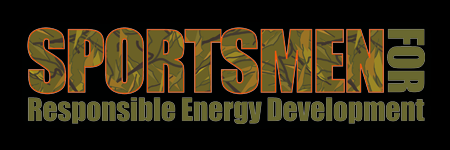Locally led water resource plans are being crafted that will help guide the management of water so it supports the needs of fish, wildlife, outdoor recreation, agriculture, and communities
Iconic Western watersheds are at a crossroads. The American West remains in the midst of a “megadrought,” which is contributing to catastrophic wildfires, impacting agricultural operations, and even affecting iconic Western wildlife and our hunting and fishing opportunities.
The Colorado River’s average annual flows have declined by 20 percent since 2000. More than half of that decline has been attributed to warming temperatures, which threaten fish and wildlife species that depend on there being not only enough water in the river but also cool enough water for them to survive.
The trickle-down effect on water-based recreation, such as fishing and boating, is easy to see. This summer, Colorado’s Yampa River was closed to fishing and recreation for more than three months due to low flows and high temperatures. Lower flows are also a concern to communities that depend on the Colorado River for drinking water in seven U.S. states—Colorado, New Mexico, Utah, Wyoming, Arizona, California, and Nevada—and Mexico. Importantly, the watershed is home to 33 percent of the U.S. Latino population and 30 Native America tribes.
Right now, we all have a chance to influence the future conservation of Western water resources as we look toward a hotter, drier future. If you are someone who depends on America’s “hardest working river” or just a curious TRCP blog reader, here’s what you need to know about the next steps and how to get involved.
The Future of Water in Colorado
The ongoing Colorado Water Plan Update offers an opportunity for hunters and anglers to have our voices heard on how communities will address water resource challenges for the next five years. The existing Colorado Water Plan outlines how to create more resilient, thriving watersheds that support robust agriculture, outdoor recreation opportunities, and vibrant communities. Now, the Colorado Water Conservation Board, the state agency responsible for developing the Colorado Water Plan, is revising this plan to ensure that it is meeting current and future water needs based on changing circumstances in our state and across the West. Over the next few months, we will share a series of videos, action alerts, and other direct ways for you to engage in the Colorado Water Plan update process.
The full proposed update won’t be available to comment on until July 2022, but conversations are already underway that will influence this plan. In Colorado, water policy and management decisions are largely informed through a grassroots process. In order to facilitate conversations around managing water, Colorado established nine Basin Roundtables, composed of local volunteers who coordinate regional input on important water resource management issues.
The Basin Roundtables represent each of Colorado’s eight major watersheds and the Denver metro area, where the majority of Colorado’s population resides. The feedback they gather may include how to prioritize funding for water projects and maintain compliance with interstate water compacts. This will help update the nine Basin Implementation Plans (BIPs), which are locally driven documents identifying goals and actions to address regional water issues and priorities. BIPs also help to prioritize projects ranging from stream restoration to water infrastructure upgrades.
Weighing in on these grassroots-level plans will help to provide recreational and environmental benefits and build out the scaffolding for the broader Colorado Water Plan. For more information on roundtables and BIPs, check out Water for Colorado’s recent blog post.
Local Hunters and Anglers Can Take Action Now
While hunters and anglers across the country have a stake in the Colorado Water Plan and how it affects fish and wildlife across the region, it is vital that those of us who live and recreate right here in Colorado participate in this first locally led planning effort. Drafts of the updated Basin Implementation Plans are currently open to public comment through November 15.
We’ve made it easy for hunters and anglers to take action and help ensure that BIPs will sustain healthy river flows for fish and wildlife, encourage water conservation and efficiency, promote diversity and equity in the update process, and reflect other top priorities for sportsmen and sportswomen. Check out our simple advocacy tool to make your voice heard today.
This blog was collaboratively written by Jared Romero, TRCP director of strategic partnerships, and Alex Funk, TRCP director of water resources and senior counsel. Top photo by U.S. Fish and Wildlife Service via flickr.
Learn more about our work to conserve the Colorado River here.






